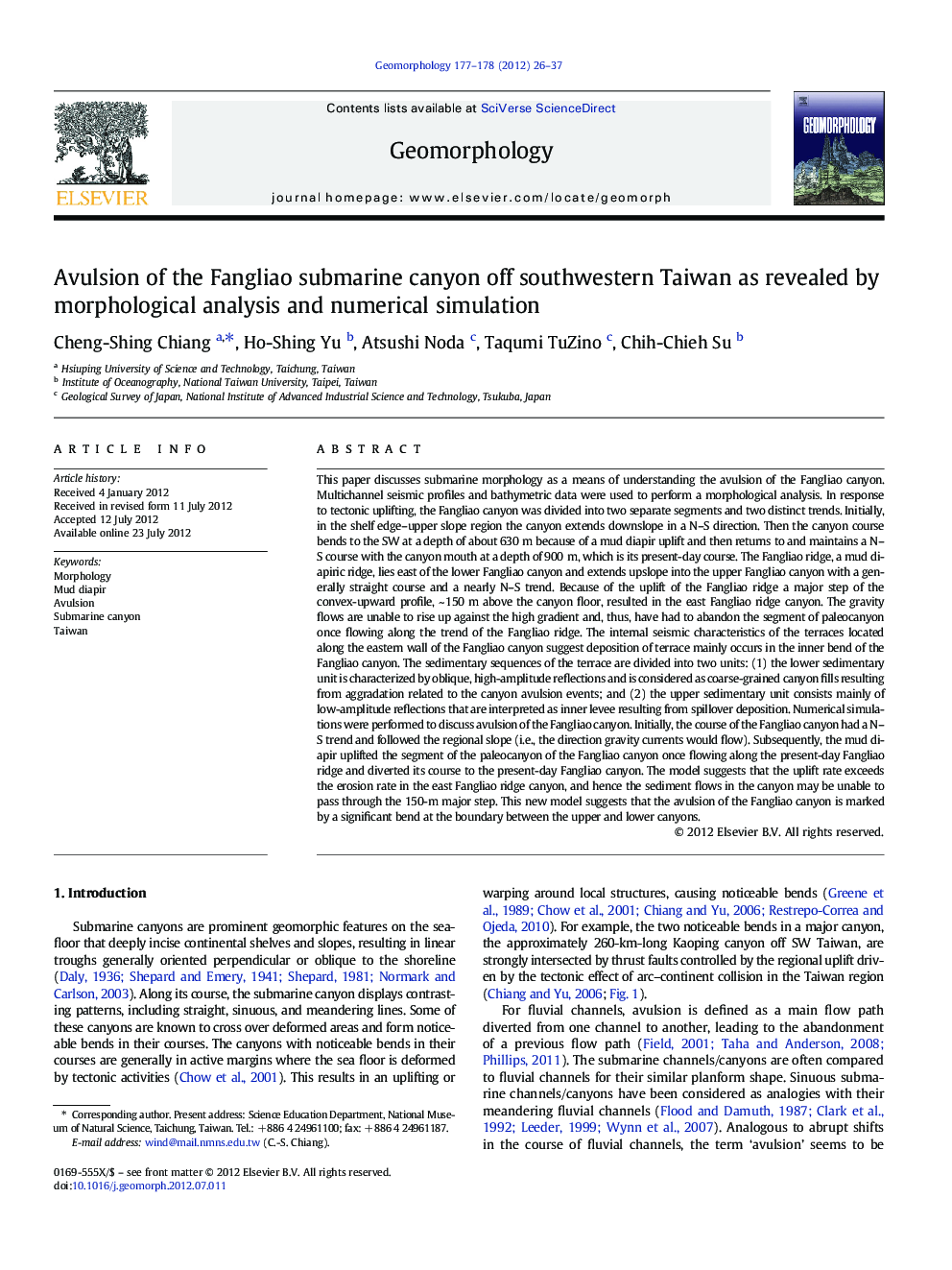| کد مقاله | کد نشریه | سال انتشار | مقاله انگلیسی | نسخه تمام متن |
|---|---|---|---|---|
| 6432880 | 1635470 | 2012 | 12 صفحه PDF | دانلود رایگان |

This paper discusses submarine morphology as a means of understanding the avulsion of the Fangliao canyon. Multichannel seismic profiles and bathymetric data were used to perform a morphological analysis. In response to tectonic uplifting, the Fangliao canyon was divided into two separate segments and two distinct trends. Initially, in the shelf edge-upper slope region the canyon extends downslope in a N-S direction. Then the canyon course bends to the SW at a depth of about 630Â m because of a mud diapir uplift and then returns to and maintains a N-S course with the canyon mouth at a depth of 900Â m, which is its present-day course. The Fangliao ridge, a mud diapiric ridge, lies east of the lower Fangliao canyon and extends upslope into the upper Fangliao canyon with a generally straight course and a nearly N-S trend. Because of the uplift of the Fangliao ridge a major step of the convex-upward profile, ~Â 150Â m above the canyon floor, resulted in the east Fangliao ridge canyon. The gravity flows are unable to rise up against the high gradient and, thus, have had to abandon the segment of paleocanyon once flowing along the trend of the Fangliao ridge. The internal seismic characteristics of the terraces located along the eastern wall of the Fangliao canyon suggest deposition of terrace mainly occurs in the inner bend of the Fangliao canyon. The sedimentary sequences of the terrace are divided into two units: (1) the lower sedimentary unit is characterized by oblique, high-amplitude reflections and is considered as coarse-grained canyon fills resulting from aggradation related to the canyon avulsion events; and (2) the upper sedimentary unit consists mainly of low-amplitude reflections that are interpreted as inner levee resulting from spillover deposition. Numerical simulations were performed to discuss avulsion of the Fangliao canyon. Initially, the course of the Fangliao canyon had a N-S trend and followed the regional slope (i.e., the direction gravity currents would flow). Subsequently, the mud diapir uplifted the segment of the paleocanyon of the Fangliao canyon once flowing along the present-day Fangliao ridge and diverted its course to the present-day Fangliao canyon. The model suggests that the uplift rate exceeds the erosion rate in the east Fangliao ridge canyon, and hence the sediment flows in the canyon may be unable to pass through the 150-m major step. This new model suggests that the avulsion of the Fangliao canyon is marked by a significant bend at the boundary between the upper and lower canyons.
Highlights⺠The bend in the Fangliao canyon appears to be mainly due to the mud diapiric uplift. ⺠Numerical simulations were performed to discuss avulsion of the Fangliao canyon. ⺠The mud diapiric uplift forced the canyon to avulse and caused geomorphic changes.
Journal: Geomorphology - Volumes 177â178, 1 December 2012, Pages 26-37